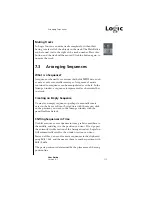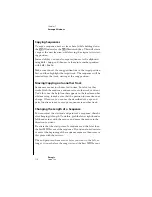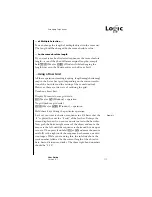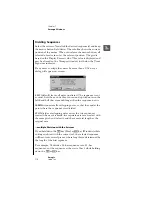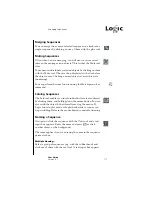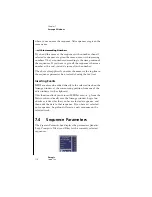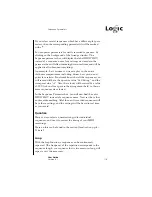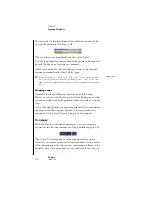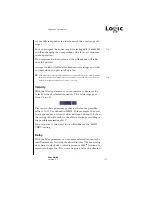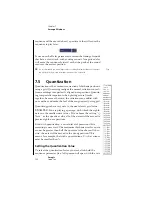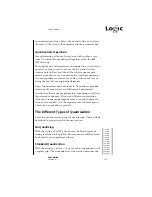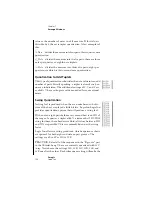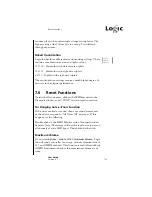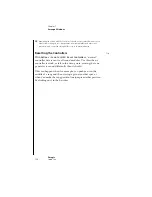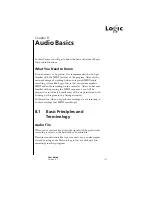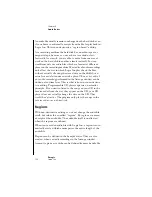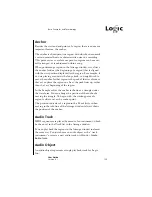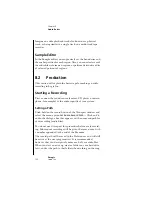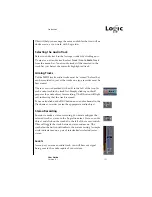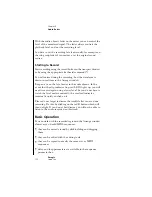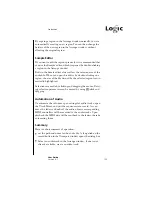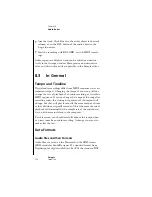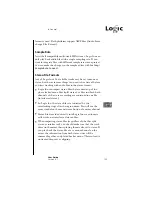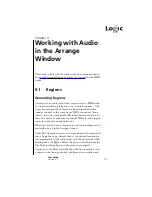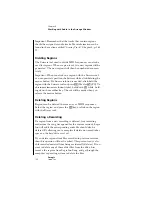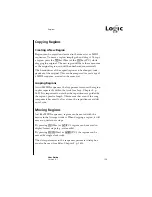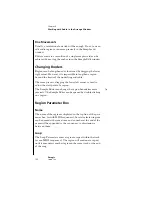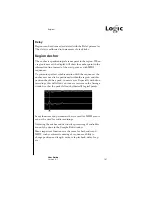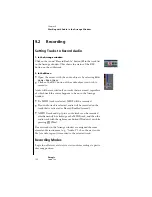
127
User Guide
Version 4.1
r
Chapter 8
Audio Basics
In this chapter you will get to know the basic structure of Logic
fun’s audio functions.
What You Need to Know
For newcomers to Logic fun, it is recommended that you get
familiar with the MIDI features of the program. After all, the
main advantage of working with an integrated MIDI/audio
recording system like Logic fun, is that you can manipulate
MIDI and audio recordings in the same way. After you become
familiar with operating the MIDI sequences, you will be
prepared to intuitively handle most of the steps involved with
working with regions in the Arrange window.
In this section, when we speak of recordings, we are referring to
audio recordings (not MIDI recordings).
8.1
Basic Principles and
Terminology
Audio File
When you record any kind of audio signal with Logic fun, this
recording is saved on the hard disk as an audio file
Because standard audio file types are used, you can also import
already existing audio files into Logic fun, or edit Logic fun
recordings in other programs.
Summary of Contents for Logic fun
Page 1: ...E Sof t und Hard wa re Gmb H l User Guide for Logic fun Version 4 1 March 2000 English ...
Page 2: ......
Page 6: ......
Page 8: ...Emagic Logic fun 8 ...
Page 26: ...22 Chapter 1 Features Emagic Logic fun ...
Page 38: ...34 Chapter 2 Sound Cards and MIDI Emagic Logic fun ...
Page 48: ...44 Chapter 3 Getting Started Emagic Logic fun ...
Page 72: ...68 Chapter 4 MIDI Tutorial Emagic Logic fun ...
Page 96: ...92 Chapter 5 Using Logic fun Emagic Logic fun ...
Page 110: ...106 Chapter 6 Transport Functions Emagic Logic fun ...
Page 140: ...136 Chapter 8 Audio Basics Emagic Logic fun ...
Page 162: ...158 Chapter 10 Mixer and Effects Emagic Logic fun ...
Page 174: ...170 Chapter 11 The Event List Emagic Logic fun ...
Page 206: ...202 Chapter 13 The Score Editor Emagic Logic fun ...
Page 224: ...220 Chapter 15 Video and MIDI Files Emagic Logic fun ...
Page 240: ...236 Glossary Emagic Logic fun ...
Page 256: ...252 Index Emagic Logic fun ...

